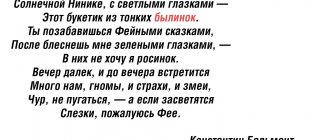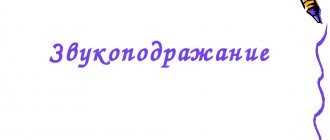How to learn sign language? This question has worried people for a long time, because there have been deaf and dumb people at all times.
It is more difficult for such people to adapt to society and to lead a full life. In the old days, in many European countries, people with hearing and speech impairments were not considered normal. They were sent to psychiatric hospitals for compulsory treatment. Society treated them negatively.
Before answering the question “how to learn sign language?”, Let’s consider how the situation has changed over time and learn the background to the emergence of deaf pedagogy and dactylology.
Bonet system
Fortunately for the deaf and dumb, there were also positive-minded people who felt sorry for them and wanted to help.
Such a person was, for example, the priest Juan Pablo Bonet. He lived at the beginning of the 17th century. One day, Bonet was hired as an assistant to a wealthy family, the head of which was an important official. This gentleman's son suffered from deafness; no one could teach him writing or arithmetic. Soon the priest created his own training system for this boy. He came up with a special symbol for each letter in the alphabet. The question of how to learn sign language did not even arise with this deaf-mute boy; Bonet began to work with the child with enthusiasm and great enthusiasm.
Very soon the boy learned the entire alphabet. After this, rumors about the Bonet system spread throughout Spain. The priest published a book in which he described his method in detail.
The history of the appearance of the deaf language
The sign language of the deaf began to emerge in Europe a very long time ago, back in the early 18th century. The main task of teachers of the deaf was to teach hard-of-hearing people how to write and read correctly. In Europe, the old French sign language was mainly used, so it was slightly modified. Teachers were able to introduce new gestures that facilitated grammar learning. At the beginning of the 19th century, this language appeared in Russia.
The World Federation for the Deaf first appeared in 1951, and it was decided to create standards for the language. Standard rules were necessarily applied to all sign languages used by public figures and professionals in working with the hearing impaired.
To standardize gestures, experts carried out long-term work and analyzed the characteristics of all nations. In 1973, they were able to release a full-fledged dictionary of sign speech, prepared by the World Federation.
How to learn sign language
Thomas Hopkins Gallaudet School
Thomas Gallaudet, after visiting the de Leppe school, returned to the States and opened his own educational institution. The method was borrowed from a French colleague. At Thomas Gallaudet's school, there were real "lectures" on how to learn sign language, adapted into English.
And again this method enjoyed great success and popularity.
Oralists opposed such a system of education. According to their beliefs, such a technique separates deaf people from the hearing community, and there is actually no benefit from it.
Interest
Most people try to follow the unspoken rule of communication and show signs of interest in any conversation by asking the other person about various details. Therefore, it is very important to be able to read the real mood of the interlocutor and his attitude towards the conversation based on non-verbal signs.
The listener's interest is revealed by the absence of gestures. Your interlocutor, who is sincerely delighted with your speeches, will be completely focused on you, trying not to create unnecessary noise. In most cases, such a person will stare at you, his whole body frozen. His eyebrows may be slightly raised and his eyes widened.
A person who experiences great interest in what is happening strives with his whole being to get closer to the source of information. Therefore, you can notice the tilt of the body towards the speaker.
Victor Ivanovich Fleury
He was a teacher and worked as a school director in St. Petersburg. He conducted a deep analysis of “deaf-mute speech” and came to the conclusion that sign language, Russian, can be learned by every person with hearing or speech impairment. In addition, he noticed that in certain companies and societies of the deaf, sign language has its own characteristics, differences and subtle patterns inherent specifically to that society. Just as in “our” (verbal speech) there is jargon and specific words, so in the “speech” of the mute this is also present.
He wrote the book "Deaf and Mute". In this work, the teacher collected all the gestures and signs known to him.
There were other people who contributed to Russian education of the deaf: I. A. Sokolyansky, L. V. Shcherba, A. Ya. Udal.
What other sign languages are there?
Gestures are widely used not only when communicating with the hearing impaired and to convey information to the deaf:
- In special cases, gestures are the object of art, for example, in pantomime. Such nonverbal communication with body movements can be used to poetically reproduce certain situations in life, convey feelings or mood.
- Some types of classical theater in India are accompanied by symbolic gestures that indicate certain actions, phenomena, emotions or objects.
- Classical drama theaters in Japan generally use sign language as an equal part of expression, which has strictly established forms and meanings.
- Gestures are also actively used in the traffic rules system - by traffic controllers, traffic police officers and drivers. Drivers can use gesture signals in situations where indicator lights and turn signals have failed. Gestures from train drivers can warn of a dangerous situation.
- There are established gestures in the army that are used in situations where it is impossible to give commands using the voice, to control the formation and give orders.
- Gestures help during sporting events and referees use signs established by international standards.
Motorist sign language
Introduction to dactylology
First you need to get acquainted with dactylology. This is the name of a special form of speech. Dactylology includes the fingerprint alphabet. In it, each letter of the alphabet has its own designation - a sign made of fingers. These signs are called dactylems.
Many people are deeply mistaken that sign language and the dactyl alphabet are one and the same thing. There is a difference: dactylems convey words letter by letter, while sign language conveys whole words.
There is also manoral speech. With this form of communication, words are read from the lips, gestures only emphasize hard and soft, deaf and voiced consonants.
Difference between deaf and auditory languages
Hiremika studies sound language and also performs a distinctive function. This method of communication is achieved by pronouncing words with the lips. Gestures depict phenomena and objects in the environment, for example, those that are far from auditory language - “play the piano”, “computer” and others. Gestures express words such as working with keys and are expressed in a single gesture. Interestingly, for a single word of a sound language, gestural dialects may have multiple methods of expressing meanings and concepts.
Meanings may vary in different speech cultures, depending on dialects and the way people speak. Each person can add features when gesturing, which is similar to auditory language and dialects. In communication between deaf and dumb people, a special grammar is used, which facilitates communication on various topics and does not repeat the principles of sound language.
Sequence of study
Let's move on to sign language itself. It contains about 2000 different symbols. How to quickly learn sign language with such a volume of signs? In fact, everything is not as difficult as it seems.
You should start learning gestures with simple words “hello”, “goodbye”, “sorry”, “thank you”. You should learn them gradually, without chasing quantity. It is better to learn a small number of gestures in one training session.
And the last recommendation. If you are seriously thinking about learning the language of the deaf, it may be worth looking for such courses in your city. They are not widespread, but you can still find them. Such courses are good because here you can get practice in live communication, hone your skills and language proficiency.
How to learn sign language words?
Russian sign language is a separate unit of language used to communicate with the hearing impaired. This type of language is distinguished not only by static figures, but also contains dynamic components and facial features. Also, during communication, it is necessary to pronounce words with your lips, which affects the gestural part.
How to learn sign language on your own
During communication, pay a lot of attention to your positions and do not make involuntary gestures so that they do not receive information inappropriately. Sign communication is based on the alphabet, which helps quickly overcome the barrier between an ordinary person and a hearing-impaired person. For many words in the Russian language, there are gestures that mean entire words or actions and are distinguished by their understandability and logic.
For example, “write” - we imitate writing with one hand on the palm of the other. “Count” - just bend your fingers. The structure of gestures is not the most complex, and the order of words is completely consistent with ordinary language. Like other languages, this type of communication is very lively and varies depending on the region. Books and guides are rarely updated, so recent publications of primers are a real treasure trove of knowledge.
The sign language of the deaf and dumb can begin to be taught from basic and simple signs that will help to understand such people. Here is a simple sign language, the words of which are the most popular:
The most popular phrases in sign language
- thank you in sign language: “spa” - the right hand is clenched into a fist and touches the forehead with the knuckles, and “sibo” is accompanied by touching the chin;
- my name...: we point a finger at ourselves using our right hand, and then we stroke the back of our left hand several times with quick movements, and make up the name using the dactyl alphabet;
- how to say good afternoon in sign language: stroke the back of your left hand twice, pointing towards you. After this, we fold our fingers into a “duck” and point it upward, with the back side facing the other person;
- please: this word speaks of a request for help and the gesture is very simple. We fold our hands and join our palms, and then move them a little as during prayer;
- how much time: we pronounce the word “how much” with our lips, and then we bring our open fingers to our mouth and tap on the wrist of our left hand, where we often wear our watch;
- goodbye: a simple sign that involves raising your hand and waving your fingers up and down.
The most important thing is to monitor the correctness of gestures and check your movements.
Sexual sympathy
yourspeech.ru
A sincere smile is the best indicator of sympathy. However, you need to learn to read it. It should be wide, the corners of the mouth should be raised, and the upper eyelids should be slightly lowered. This is a real, frank smile, which, like nothing else, indicates your likeability to a person. Mirroring the interlocutor's posture is also a universal sign of sympathy.
Confident men express their sympathy for a girl by lingering on her gaze. Those who are less confident, on the contrary, will sometimes glance at the object of their sighs, quickly changing the direction of their gaze. Also, a man can hook the belt in the abdominal area with his thumb, point his feet towards the woman and constantly adjust his clothes in her presence.
Signs of female sympathy are well known: ladies begin to unconsciously touch their hair and adjust their clothes. Attraction is also indicated by a slightly open mouth, enlarged pupils, and demonstration of sexual parts of the body.
Mistrust
attico.dp.ua
A person who strongly doubts the truth of your words will most likely try to avoid direct eye contact. The interlocutor, who has not formed a definite opinion regarding your words, will repeat certain monotonous movements such as scratching his head, raising his hands to his face, and shrugging his shoulders. In such a situation, he really doubts and you still have a chance to persuade him to your point of view.
If a person touches your mouth, then he most likely no longer trusts you. He doubts your sincerity, and it will be quite difficult to convince him.
Nonverbal Communication
Nonverbal communication is the process of transmitting thoughts without the use of speech - the second signaling system. It absorbs 60–80% of veiled information.
Each of us, when communicating with an opponent who competently sets out the essence of the matter and argues with facts, often feels some kind of catch in his words. But, despite the reliability and veracity of the information, intuition suggests that you should not rely entirely on this person. And with further communication, discomfort is felt, the person is looking for something to complain about.
And, indeed, the interlocutor is betrayed by changes in facial expressions, posture and gestures that contradict his smooth presentation. A certain inconsistency appears and serious concerns arise that he is not acting in your interests at all.
The ability to correctly read the secret language of gestures will help you avoid unpleasant situations. For example, HR specialists cannot do without knowledge about the hidden intentions of potential employees.
It is difficult for a person to hold back emotions for a long time; they must find a way out. But due to circumstances, rules of decency and norms of society, we are not free to surrender to the will of feelings and express them by changing posture, facial expressions and gestures. Often this behavior becomes the norm and turns into a habit.
Examples of nonverbal communication
- There is a common method of establishing contact with new acquaintances: you should copy his gestures and postures. If the interlocutor crossed his arms, you can repeat this body movement. This manipulation promotes non-verbal unity. There is a whole set of such small tricks.
To grasp the true meaning, you need to pay close attention to the position of the interlocutor's hands and feet.
Mainly gestures and postures emphasize the truth, and sometimes contradict what was said.
It is difficult to believe a person with crossed limbs convincing another of good intentions. It is unlikely that he will fulfill his promise. Surely he uses the location and trust of his partners for his personal interests.
Through gestures and posture you can hide some information from your opponents. Despite the casualness and ease of communication, the posture makes it clear that the owner does not intend to share important information with anyone.










